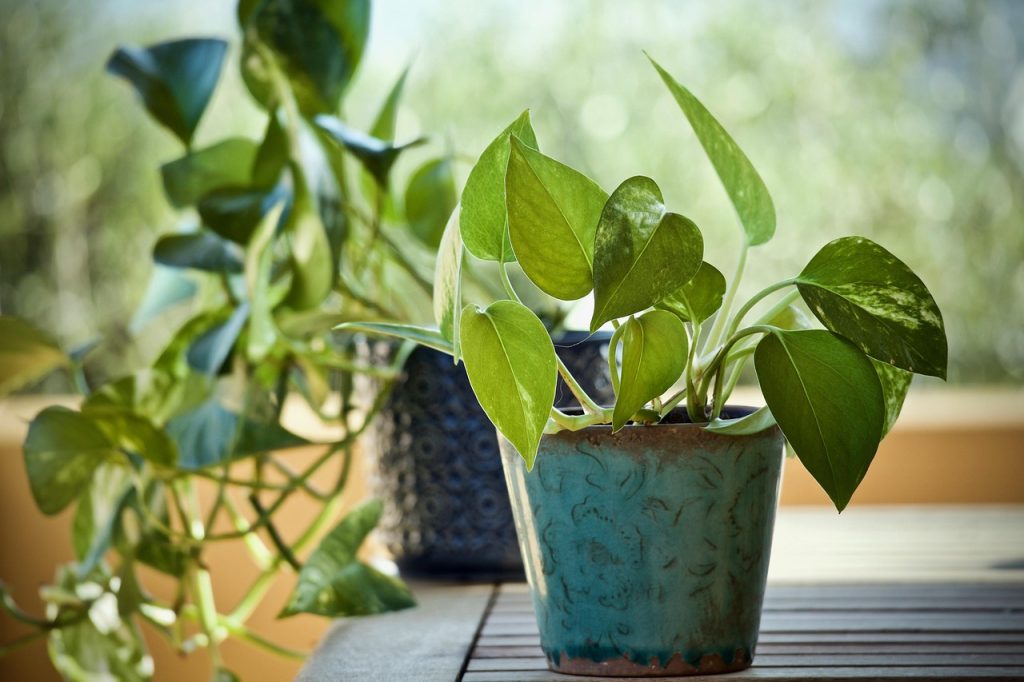Charm of Pothos, often referred to as the “devil’s ivy” due to its tenacity and ability to thrive in diverse environments, is a beloved houseplant for both novice and experienced gardeners alike. Its vibrant foliage and easy-care nature make it a staple in many homes, providing a touch of greenery even in less-than-ideal conditions. This article delves into the fascinating world of pothos, exploring its origins, varieties, and the secrets to ensuring it flourishes indoors.

Origins and Botanical Background of Pothos
The pothos plant, scientifically known as Epipremnum aureum, is native to the tropical forests of Southeast Asia. It thrives in the dense, humid understories of these forests, climbing and sprawling across the forest floor and up trees, which is why it has developed such a robust growth habit. While it is primarily found in areas like Malaysia and Indonesia, its popularity as a houseplant has spread it across the globe.
Identifying Pothos: Appearance and Varieties
Pothos are characterized by their heart-shaped leaves which can display a range of colors from deep green to variegated patterns of white, yellow, and pale green. This adaptability in appearance makes them a versatile option for indoor décor.
Popular Varieties
- Golden Pothos: This classic variety features bright green leaves with golden variegation, making it one of the most recognizable pothos types.
- Marble Queen: Known for its striking white and green marbled leaves, this variety brings a touch of elegance to any room.
- Jade Pothos: Entirely green, this variety is perfect for those who prefer a more uniform look.
- Neon Pothos: Its lime green leaves add a vibrant splash of color, ideal for brightening up darker spaces.
Optimal Growing Conditions for Pothos
Given its origins, Charm of pothos is a resilient plant that can tolerate a wide range of conditions, but there are some key factors to consider to maximize its growth and vibrancy.
Light Requirements
Pothos is remarkably adaptable to various lighting conditions. While it thrives in bright, indirect light, it can also survive in low-light areas, making it perfect for offices and rooms with limited natural light. However, for the variegated varieties, brighter light helps maintain their unique patterns.
Soil and Potting
A well-draining potting mix is essential for pothos. A combination of peat moss and perlite or sand ensures good drainage and prevents root rot. Regular potting soil can also work if amended with materials to enhance drainage.
Watering Needs
Pothos prefers to dry out between waterings. Overwatering is a common mistake and can lead to root rot. It’s best to water when the top inch of soil feels dry to the touch.
Temperature and Humidity
Being a tropical plant, Charm of pothos enjoys warm temperatures ranging from 65°F to 85°F (18°C to 29°C). It can tolerate lower temperatures but doesn’t fare well in drafts or sudden temperature changes. Moderate to high humidity is ideal, but it can adapt to standard indoor humidity levels.

Planting and Propagation Techniques
Pothos is incredibly easy to propagate, making it a favorite among plant enthusiasts looking to expand their indoor gardens.
Propagation Methods
- Stem Cuttings: The simplest method involves cutting a section of the vine just below a node and placing it in water or soil. Roots typically develop within a few weeks.
- Water Propagation: Place cuttings in a jar of water, ensuring the nodes are submerged. Change the water weekly to prevent stagnation and promote healthy root growth.
- Direct Soil Planting: Cuttings can be directly planted into soil. This method requires keeping the soil consistently moist until roots develop.
Seasonal Care Tips
While pothos is low-maintenance, understanding its seasonal needs can enhance its growth and appearance.
Spring and Summer
These are the growing seasons for Charm of Pothos. During this time, it’s beneficial to fertilize monthly with a balanced, water-soluble fertilizer to support vigorous growth.
Fall and Winter
Growth slows during these months. Reduce watering and cease fertilization to allow the plant to rest. Keep an eye on humidity levels, as indoor heating can dry out the air.
Common Problems and Solutions
Despite its hardiness, pothos can encounter a few issues. Here’s how to address them:
Yellowing Leaves
This is often a sign of overwatering. Ensure the plant is not sitting in water and that the pot has adequate drainage.
Pests
Pothos can attract pests like spider mites and mealybugs. Regularly inspect leaves and use insecticidal soap or neem oil for treatment.
Leaf Spots
Brown spots can indicate fungal issues. Improve air circulation around the plant and avoid getting leaves wet during watering.

The Versatile Uses of Pothos
Beyond its aesthetic appeal, pothos serves practical purposes in the home.
Air Purification
Pothos is known for its ability to purify indoor air, removing toxins like formaldehyde, benzene, and xylene, according to NASA’s Clean Air Study.
Decorative Versatility
Whether cascading from a hanging basket or climbing a trellis, pothos can adapt to various display methods, enhancing any interior space.
Frequently Asked Questions About Pothos
Water your pothos when the top inch of soil is dry. This usually means once a week, but it can vary depending on indoor conditions.
Yes, pothos can grow in water, but it may not reach its full potential compared to when planted in soil. Regularly change the water to prevent stagnation.
Yes, pothos is toxic to pets if ingested. It contains calcium oxalates which can cause irritation and digestive issues in cats and dogs.
Pothos thrives in bright, indirect light. It can tolerate low-light conditions but may not grow as vigorously or maintain its variegation.